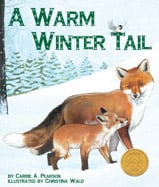Alignment to Standards for KY

| Grade | Number | Standard |
|---|---|---|
| 4 | SC-04-2.3.3 | make generalizations and/or predictions about weather changes from day to day and over seasons based on weather data. |
| 4 | SC-04-2.3.3a | Weather changes from day to day and over seasons. |
| 4 | SC-04-3.4.1a | compare the different structures and functions of plants and animals that contribute to the growth, survival and reproduction of the organisms; |
| 4 | SC-04-3.4.1b | make inferences about the relationship between structure and function in organisms. Each plant or animal has structures that serve different functions in growth, survival and reproduction. For example, humans have distinct body structures for walking |
| 4 | SC-04-4.7.1a | patterns of evidence related to the survival and reproductive success of organisms in particular environments. |
| 4 | SC-4-UD-U-5 | Students will understand that some likenesses between parents and offspring are inherited (e.g. eye color) and some likenesses are learned (e.g. speech patterns in people). |
| 5 | SC-05-3.5.1 | cause and effect relationships between enhanced survival/reproductive success and particular biological adaptations (e.g., changes in structures, behaviors, and/or physiology) to generalize about the diversity of species. |
| 5 | SC-05-3.5.2 | all organisms must be able to obtain and use resources, grow, reproduce, and maintain stable internal conditions while living in a constantly changing external environment. |
| 5 | SC-5-BC-S-2 | adaptations of various organisms to their environments through observations as well as print and non-print based resources |
| 5 | SC-5-BC-S-3 | ways that organisms cope with fluctuations (e.g. temperature, precipitation, change in food sources) in their environments |
| 5 | SC-5-BC-U-3 | successful organisms must be able to maintain the basic functions of life in response to normal environmental fluctuations (e.g. day/night, seasonal temperature changes, precipitation). |
| 5 | SC-5-UD-U-1 | animals and plants have a great variety of body plans and internal structures that contribute to their being able to meet their needs. |
| Primary | SC-EP-2.3.2 | describe patterns in weather and weather data in order to make simple predictions based on those patterns discovered. |
| Primary | SC-EP-2.3.2a | Weather changes from day to day and over seasons. |
| Primary | SC-EP-3.4.3 | Students will describe the basic structures and related functions of plants and animals that contribute to growth, reproduction and survival. |
| Primary | SC-EP-3.4.3a | Each plant or animal has observable structures that serve different functions in growth, survival and reproduction. For example, humans have distinct body structures for walking, holding, seeing and talking. These observable structures should be explored |
| Primary | SC-EP-4.7.1 | cause and effect relationships existing between organisms and their environments. |
| Primary | SC-P-BC-U-2 | understand that living things are found almost everywhere on our planet, but organisms living in one place may be different from those found somewhere else. |
| Primary | SC-P-EU-U-2 | Students will understand that some events in nature have a repeating pattern. Weather changes from day to day, but things such as temperature or precipitation tend to be similar (high, medium or low) in the same months every year. |
| Primary | SC-P-I-S-1 | characteristics of an ecosystem |
| Primary | SC-P-I-S-2 | how organisms depend on their environments |
| Primary | SC-P-I-U-1 | the world has many different environments. Distinct environments support the lives of different types of organisms. |
| Primary | SC-P-UD-S-3 | Students will investigate adaptations that enable animals and plants to grow, reproduce and survive (e.g., movements, body coverings, method of reproduction) |
| Primary | SC-P-UD-S-4 | Students will analyze structures of plants and animals to make inferences about the types of environments for which they are suited |
| Primary | SC-P-UD-U-2 | plants and animals have features that help them live in different environments. |
| Primary | SC-P-UD-U-3 | some animals are alike in the way they look and in the things they do, and others are very different from one another. |
| Primary | SC-P-UD-U-4 | the offspring all living things are very much like their parents, but not exactly alike. |